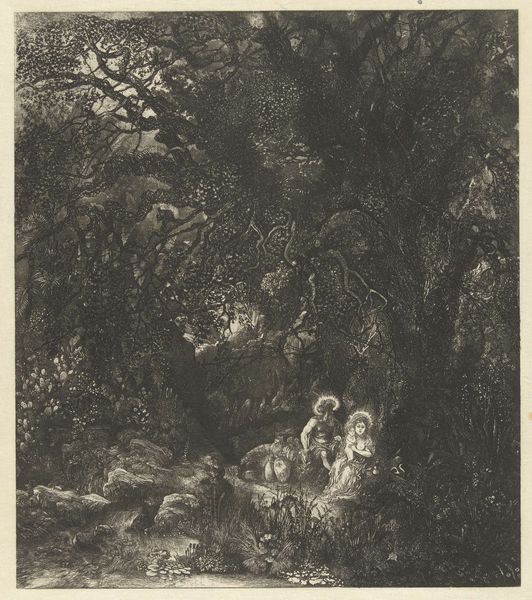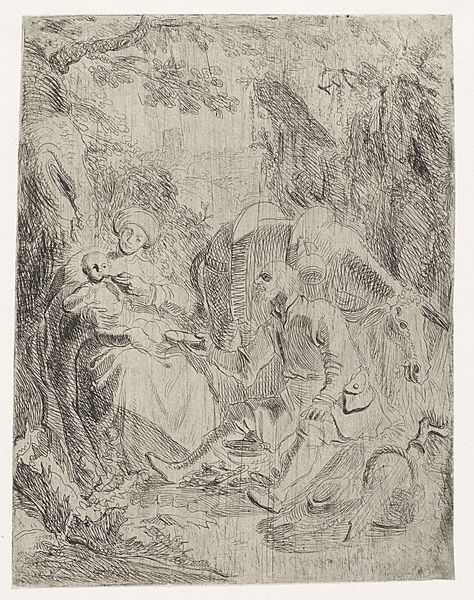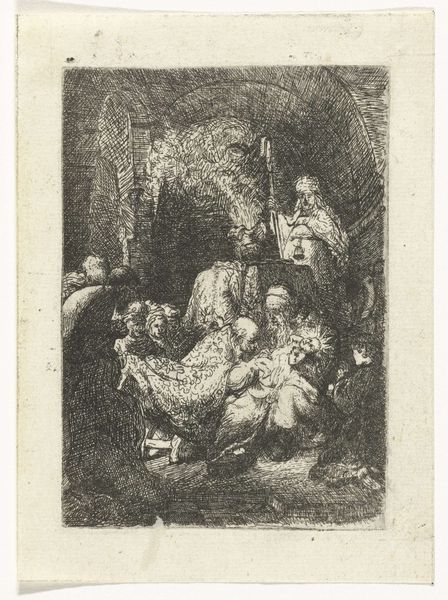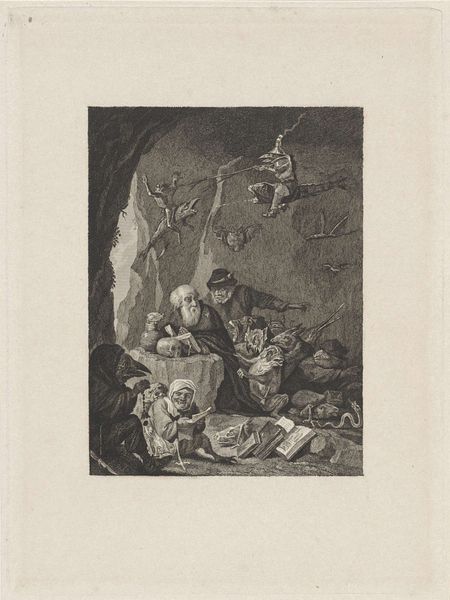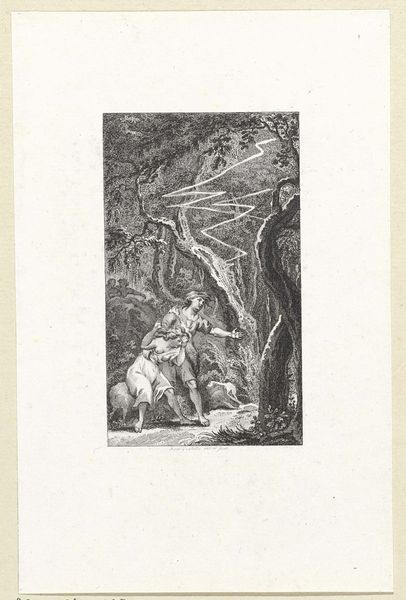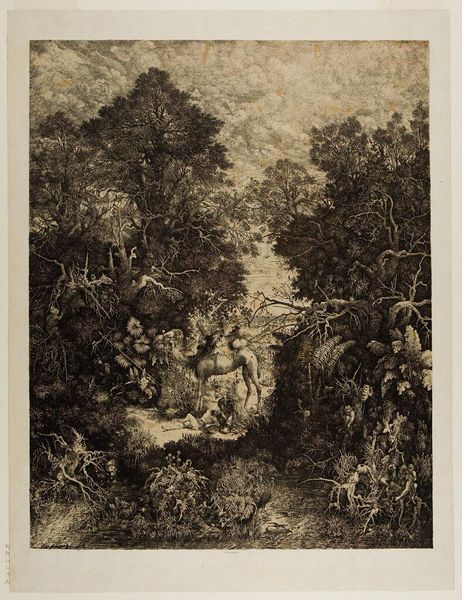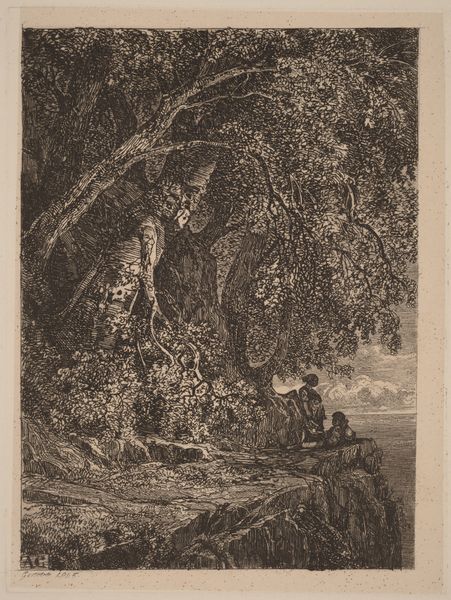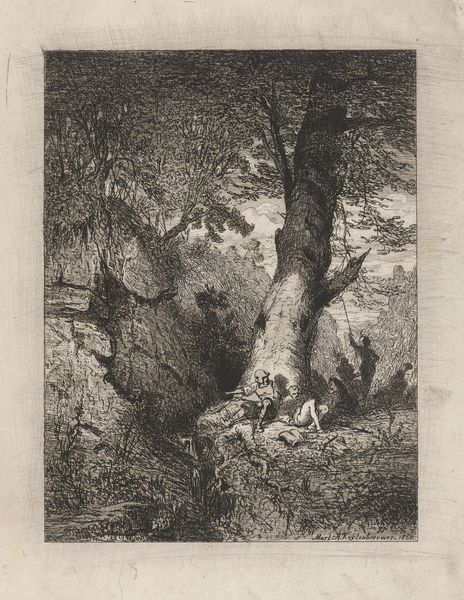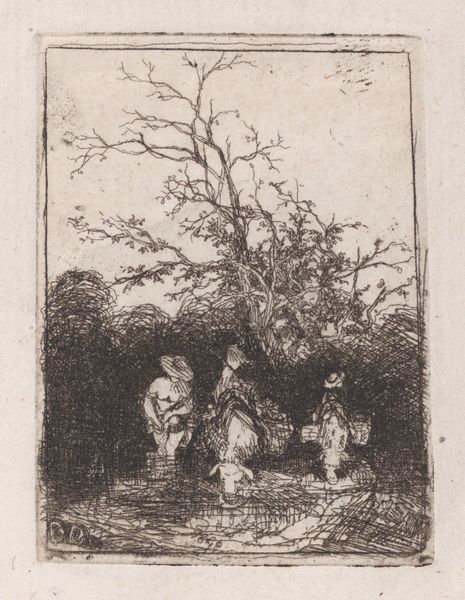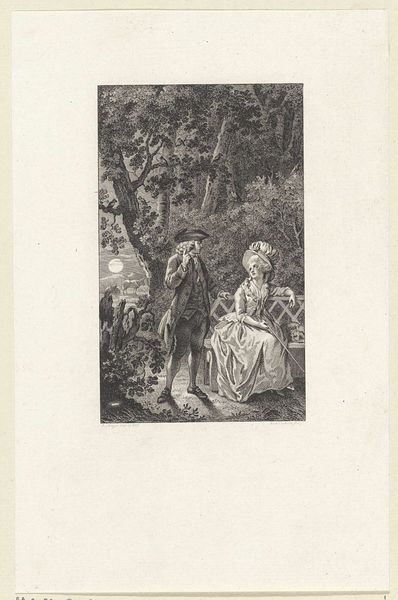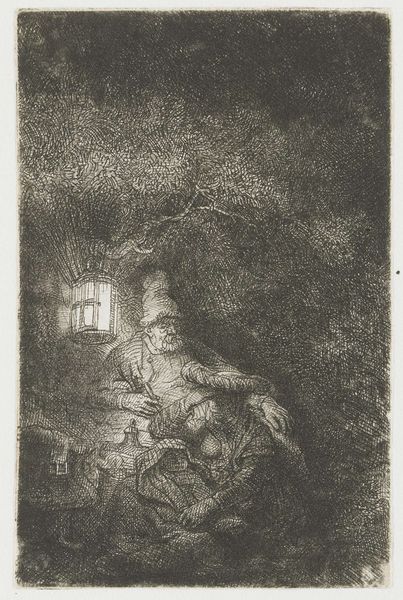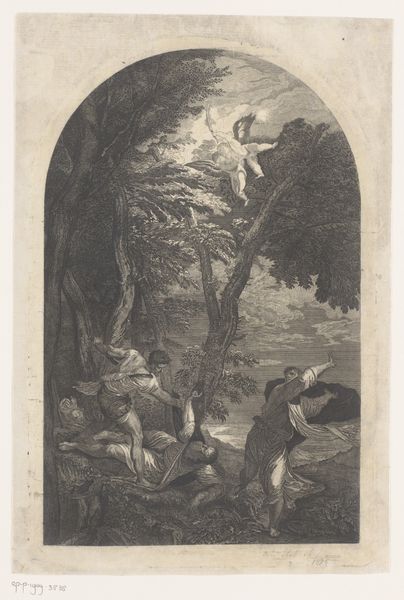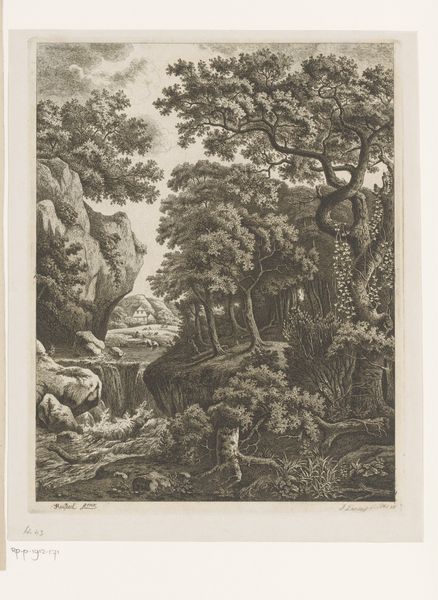
print, etching
#
baroque
# print
#
etching
#
landscape
#
figuration
#
history-painting
Dimensions: height 94 mm, width 66 mm
Copyright: Rijks Museum: Open Domain
Editor: This etching, "Rest on the Flight into Egypt" by Jan van Noordt from 1642, it’s so detailed! The figures are nestled in this dark, almost claustrophobic forest. What I find striking is the textural contrast; the figures almost seem to emerge from the dense, scratchy lines. What can you tell me about it? Curator: The intense details arise from the etcher's labor. The tools employed—the needles, the acids biting into the metal—each played a role. These elements reveal the cultural significance assigned to printmaking as a process that could disseminate imagery and ideas across Europe at the time. Consider the socio-economic aspect of prints in 17th-century Netherlands: were they catering to a specific patron or to a burgeoning market for art? Editor: I hadn’t thought about it like that, about the economic impact of prints in that moment! So, rather than just appreciating the artistic skill, you're suggesting we think about the materials, the tools, the marketplace for prints in the 1600's? Curator: Exactly. Noordt wasn't simply creating a beautiful image. He was engaging in a complex system of production and consumption. Look at the density of the lines, the obvious work needed to achieve such detail. Does this level of detail enhance the narrative or serve a different purpose, perhaps catering to a specific buyer? Editor: The detail definitely makes it seem higher quality, something worth purchasing. This wasn't some quick sketch; the artist clearly put in hours and hours. Curator: Precisely! And thinking about labor opens up questions regarding workshops, distribution networks, and the role of printmaking in the visual culture. How did prints like this one affect our understanding of biblical scenes, compared to, say, large-scale paintings commissioned by wealthy patrons? Editor: That’s a really interesting way to look at it. So, it’s less about the specific Biblical subject matter and more about how it was made and disseminated and how that shaped its value? I will think more about this!
Comments
No comments
Be the first to comment and join the conversation on the ultimate creative platform.
